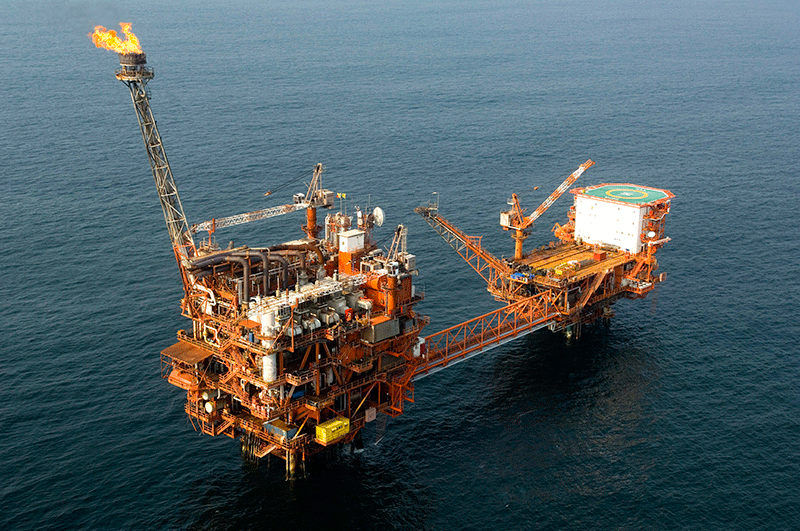Eni’s Nene Marine 3 exploration well in the offshore Marine XII Block encountered a significant wet gas and light oil accumulation in the pre-salt clastic sequence, thereby outlining a significant extension to the west of the reservoir. Drilled in a water depth of 28m, the well flowed in excess of 5,000 bpd of 36° API oil on a production test. This is an important result, allowing Eni to nearly double its estimates of in-place resources, which now stand at 1.2 Bbo and 1,060 Bcf gas.
 Eni platforms offshore CongoThe 1,103 km2 Marine XII block is located 15 km off the Congolese coast at a water depth ranging from 20 to 50m. The fields discovered to date are Banga (gas and condensate) and Litchendjili (oil, gas and condensate) in the south-eastern sector of the permit, as well as Louvessi Marine (gas and condensate) and Louvessi Profond Marine (oil and gas) fields. In addition, undrilled prospects exist on the Djeno and Chela plays. The overall potential of the Nene Marine field and of the neighbouring Litchendjili Marine fields, which lie about 17 km off the Congolese coast, is now estimated to be 2.5 Bboe in place. The block also has a significant additional exploration upside which will be determined by the next exploratory and delineation campaign. Eni, which has a 65% stake in the block, and its partners New Age (25%) and Congo’s national oil company SNPC (10%) are now evaluating the rapid commercial development of these reserves with the aim of launching first oil production in 2016.
Eni platforms offshore CongoThe 1,103 km2 Marine XII block is located 15 km off the Congolese coast at a water depth ranging from 20 to 50m. The fields discovered to date are Banga (gas and condensate) and Litchendjili (oil, gas and condensate) in the south-eastern sector of the permit, as well as Louvessi Marine (gas and condensate) and Louvessi Profond Marine (oil and gas) fields. In addition, undrilled prospects exist on the Djeno and Chela plays. The overall potential of the Nene Marine field and of the neighbouring Litchendjili Marine fields, which lie about 17 km off the Congolese coast, is now estimated to be 2.5 Bboe in place. The block also has a significant additional exploration upside which will be determined by the next exploratory and delineation campaign. Eni, which has a 65% stake in the block, and its partners New Age (25%) and Congo’s national oil company SNPC (10%) are now evaluating the rapid commercial development of these reserves with the aim of launching first oil production in 2016.
Congo is among the top five oil producers in Sub-Saharan Africa, according to the US Energy Information Administration (EIA). The country holds sizeable proved natural gas reserves but only small amounts are commercialised because of the lack of infrastructure. Oil production in Congo has been in decline for years due to maturing fields, with the ministry projecting output of 242,000 bopd in 2014. New discoveries have revived investor interest and plans for a licensing round for around 10 onshore and offshore oil blocks have yet to be confirmed. The offshore is thought to contain significant reserves of oil concealed below a layer of salt that some believe are comparable to the billions of barrels that have been found off Brazil.





